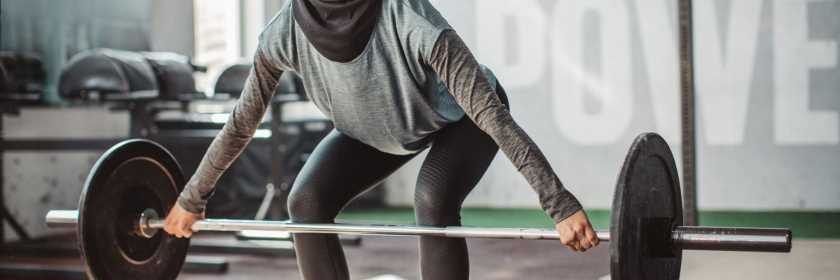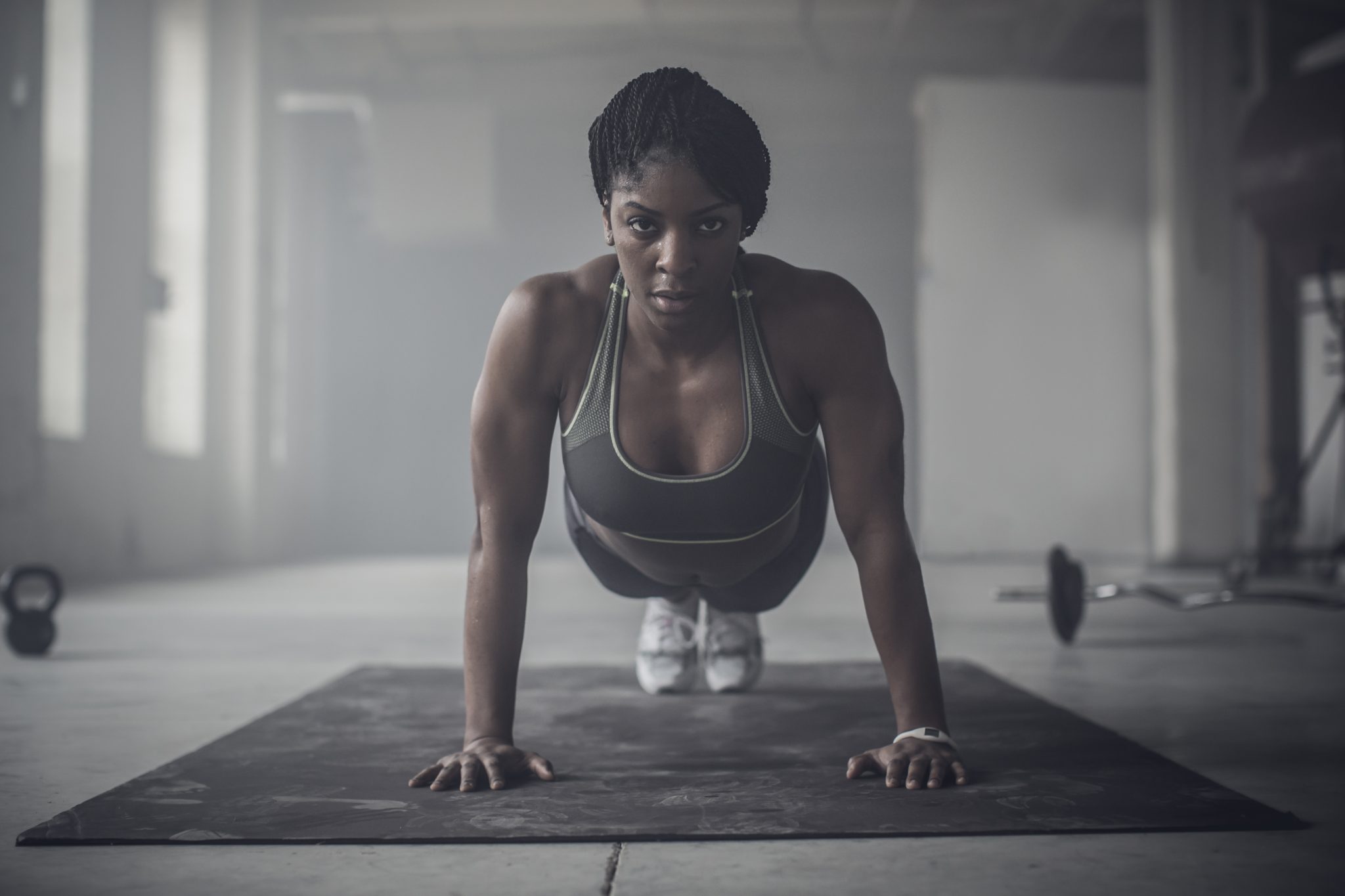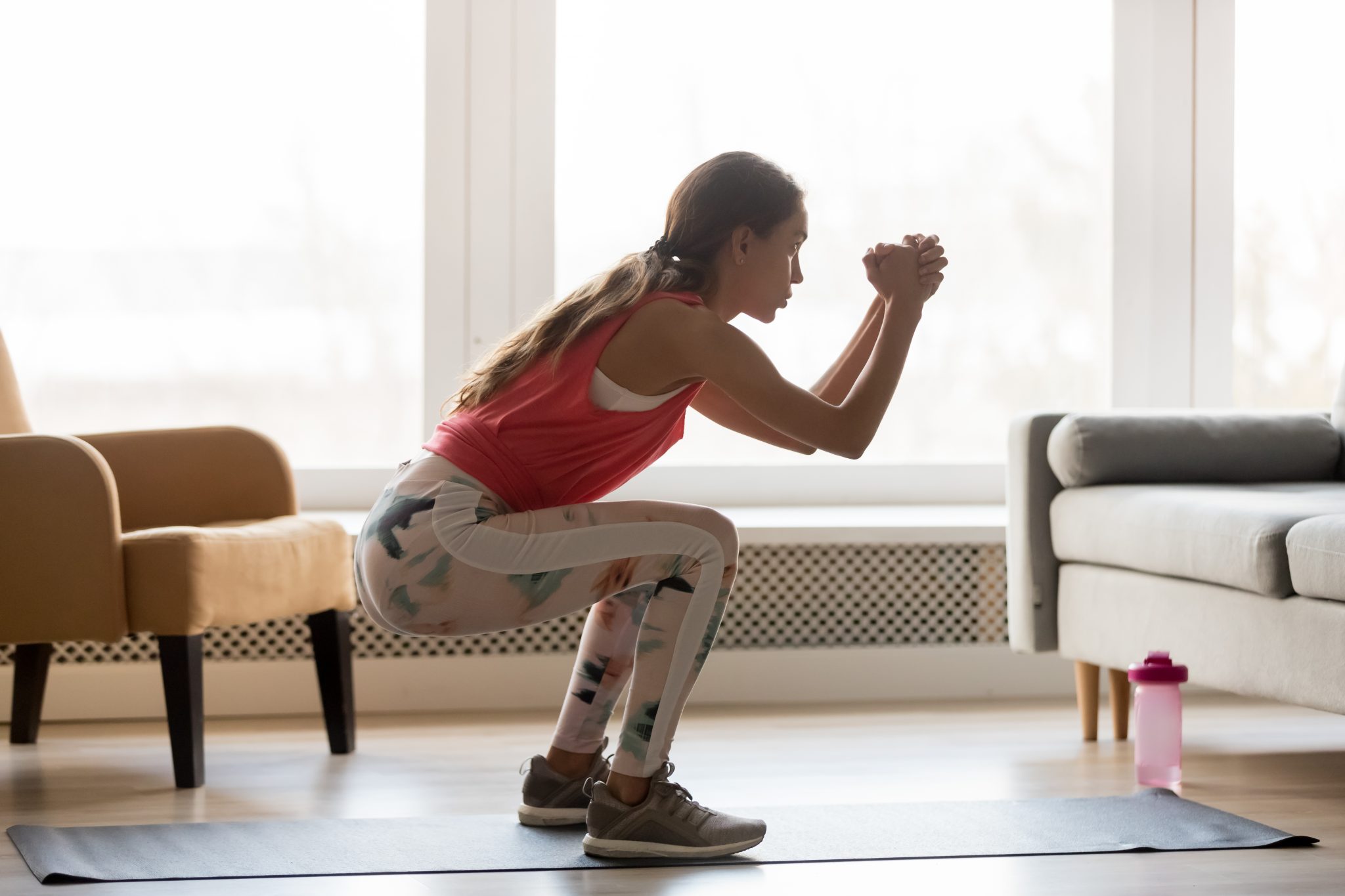Here's why we should all be doing compound exercises

Compound exercises make for an intense and highly effective workout – but what exactly are they? We asked a fitness trainer and found out everything you need to know.
No matter how much you may love your gym sessions and fitness regime, doing the same workouts can get a little tiresome after a while. Particularly if you tend to focus on isolation exercises, which allow you to target and strengthen specific muscle groups in your body, it might be worth swapping a few out and giving compound exercises a try.
As personal trainer and co-founder of The Athlete Method Kerry Dixon explains, compound exercises are “single or pairs of exercises that work multiple muscle groups at the same time”, requiring coordination, flexibility and strength in different areas of the body.
But what are the benefits of compound exercises? Why are they important? And how can you keep yourself safe when practising them? Kerry has all the answers you need, as well as some top tips on how to do staple compound exercises.
What are the benefits of compound exercises?
Amongst their many benefits, compound exercises are great for increasing muscle mass. Kerry explains that, because you are making multiple muscle groups work together at once, “through each compound exercise the muscles are able to recruit new muscle fibres, to help you gain more strength and mass”.
They do, however, require more than just strength, as they test everything from your dexterity to your endurance, and are more likely to get your heart rate up than isolation exercises. As a result, they provide an intense workout, while also managing to be super time efficient. In fact, since they target so many muscles all at the same time, they are ideal to do if you only have limited time but still want to make good progress in the gym.
How can you keep yourself safe when doing compound exercises?
It’s important to make sure you are performing compound exercises correctly in order to keep yourself safe and injury-free, particularly if you aren’t used to doing them yet. Technique is of vital importance, to make sure you aren’t straining any of the muscles in the different muscle groups you will be working. If you are performing compound exercises for the first time, Kerry recommends “asking a personal trainer to double check your form”.
You may also like
Benefits of exercise: the short-term effects of working out on the mind and body
As with any exercise, it is also important to start slow and listen to your body. So don’t overtrain, and start with eight to ten reps of each exercise and work your way up to longer sets. And, if the compound exercise you are practising requires you to use weights, make sure you use a lighter weight at first.
The best compound exercises for beginners
Squats
A squat is a firm favourite of gym-goers of all levels and abilities. It provides a highly effective lower body workout, “working your glutes, quads, hamstrings, abductors, hip flexors and calves”, says Kerry.
To do a squat, “start with your feet shoulder width apart and your shoulders back, with your arms stretched either in front or across your chest”. Then, bend your knees and lower yourself towards the ground, “pushing your weight back into your heels”. Once you are as low as you can go and you can feel a slight stretch in the front of your hips, “squeeze your glutes, push your hips forward and return to standing”.
Deadlifts
Deadlifts are another great compound exercise for an effective lower body workout, and you will need a weighted bar to do them. To start, stand with your feet around shoulder width apart, and then bend at the knees to lower your hands to the barbell on the ground in front of you, “keeping you back straight, your shoulders back, and your head facing forwards”, Kerry says. Grip the bar with your hands facing forwards and your hands on the outside of your shins.
From here, you need to hinge at the hips and straighten your legs, “ensuring your abs are engaged as you stand upright, holding the bar in front of your thighs”. Hold for a second, and then return the bar to the ground. “This will work your gluteus maximus, as well as your quadriceps femoris (a group of muscles at the front of your thigh), hamstrings, and erector spinae”, or the large muscles that run down either side of your spine.
Press ups
If you’re after a compound workout that targets multiple muscle groups in your upper body, then press ups are the way to go. They “target your triceps, pecs, shoulders, abs and lower back”, explains Kerry, and they’re really easy to work into just about any gym session or home workout.
You may also like
Two full body stretches that target every major muscle group
Starting in a plank position – hands on the ground and arms extended, holding your body parallel to the floor so that it forms a straight line running down to your toes – “engage your abs and lower your chest to the ground”, bending at the elbows. Then, drive through your hands to “push up strong through your arms to return to a plank position”.
Follow @StrongWomenUK on Instagram for the latest workouts, delicious recipes and motivation from your favourite fitness experts.
Images: Getty
Source: Read Full Article

